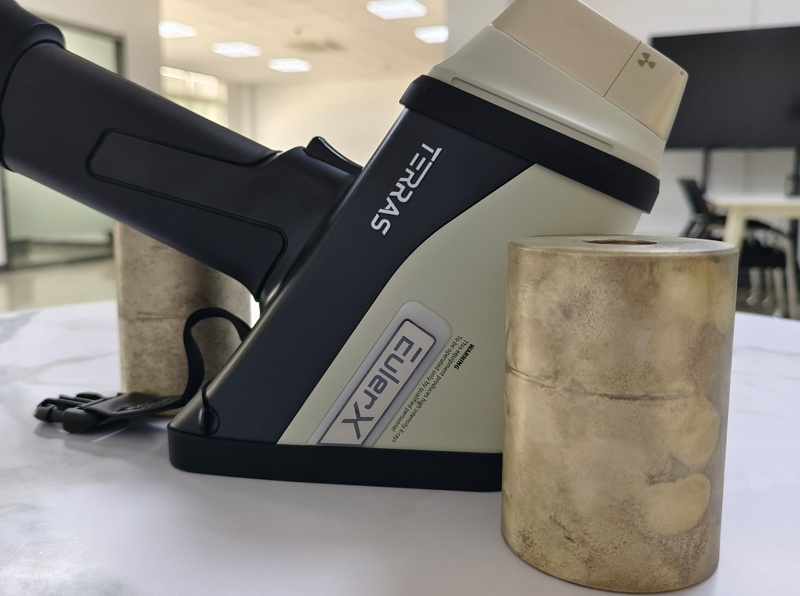
Metal Material
A high-tech enterprise focusing on the development and application of X-ray technology products, committed to becoming a leading supplier of X-ray industrial testing solutions.
How to Use Handheld XRF for Metal Identification in the Field
In industries like scrap metal recycling, manufacturing, and mining, accurately identifying metal alloys is critical for operational efficiency, quality control, and profitability. Traditional methods of metal identification often involve time-consuming lab tests or subjective visual inspections, which can lead to errors and delays. Enter handheld X-ray fluorescence (XRF) analyzers—a game-changing tool that allows for fast, accurate, and on-the-spot metal identification in the field. In this blog, we’ll explore how to use handheld XRF for metal identification, its benefits, and best practices to get the most out of this powerful technology.
What is Handheld XRF?
Handheld XRF is a portable, non-destructive analytical tool that uses X-ray fluorescence to determine the elemental composition of materials. When the device is pointed at a metal sample, it emits X-rays that excite the atoms in the sample, causing them to emit secondary X-rays (fluorescence). By measuring the energy and intensity of these secondary X-rays, the analyzer can identify the elements present and their concentrations, providing a detailed breakdown of the metal’s composition.

Why Use Handheld XRF for Metal Identification?
Handheld XRF analyzers offer several advantages for metal identification in the field:
Speed: Results are delivered in seconds, enabling quick decision-making.
Accuracy: Provides precise elemental analysis, even for trace elements.
Portability: Lightweight and easy to carry, making it ideal for field use.
Non-Destructive: Does not damage the sample, preserving its integrity.
Cost-Effective: Reduces the need for lab testing and minimizes operational downtime.
Steps to Use Handheld XRF for Metal Identification
Using a handheld XRF analyzer for metal identification is straightforward, but following the right steps ensures accurate and reliable results. Here’s a step-by-step guide:
1. Prepare the Analyzer
Charge the Device: Ensure the analyzer is fully charged or has sufficient battery life for your work session.
Calibrate the Device: Follow the manufacturer’s instructions to calibrate the analyzer. Some devices may require calibration based on the type of metal being tested.
Set the Mode: Choose the appropriate testing mode (e.g., alloy analysis, precious metals, or mining) based on your application.
2. Prepare the Sample
Clean the Surface: Remove any dirt, rust, or coatings from the metal surface, as these can interfere with the analysis.
Ensure Flat Surface: For best results, place the analyzer on a flat and stable area of the sample.
Safety First: Wear appropriate personal protective equipment (PPE), such as gloves and safety glasses, especially when handling unknown or potentially hazardous materials.
3. Perform the Analysis
Position the Analyzer: Place the analyzer’s window directly on the sample surface or hold it steady a few millimeters away, depending on the device’s design.
Trigger the Measurement: Activate the analyzer by pressing the trigger or button. Hold the device steady until the measurement is complete (usually a few seconds).
Review the Results: The analyzer will display the elemental composition of the sample on its screen, including the percentages of each element detected.
4. Interpret the Results
Compare with Standards: Use the analyzer’s built-in library or reference materials to compare the results with known alloy compositions.
Identify the Alloy: Based on the elemental composition, determine the specific alloy grade or type of metal.
Record Data: Save or export the results for documentation and further analysis.
5. Clean and Maintain the Analyzer
Clean the Window: Wipe the analyzer’s window with a soft cloth to remove any residue from the sample.
Store Safely: Place the analyzer in its protective case to prevent damage during transport.
Regular Maintenance: Follow the manufacturer’s guidelines for regular maintenance, such as replacing filters or updating software.
Applications of Handheld XRF in Metal Identification
Handheld XRF analyzers are widely used in various industries for metal identification:
Scrap Metal Recycling: Quickly sort and identify different metal alloys to maximize recycling efficiency and profitability.
Manufacturing: Verify the composition of raw materials and finished products to ensure they meet quality standards.
Mining and Exploration: Analyze ore samples to determine metal content and guide exploration efforts.
Aerospace and Automotive: Ensure the use of correct alloys in critical components to maintain safety and performance.
Jewelry and Precious Metals: Identify and authenticate precious metals like gold, silver, and platinum.
XRF spectrometry is a reliable, efficient, and portable tool for metal analysis, widely used in quality control. The EulerX 900 series stands out with its advanced technology, delivering fast, accurate results in seconds. It enables non-destructive testing of materials, products, and parts, displaying alloy grades and compositions instantly on its touch screen with minimal training and no sample preparation.

Terras EulerX900 Handheld Alloy Analyzer
Versatile and user-friendly, the EulerX 900 analyzes solids, liquids, and powders, making it ideal for alloy identification, scrap recycling, precious metals analysis, and PMI. It’s a must-have for metal processing and beyond.
Conclusion
Handheld XRF analyzers have revolutionized metal identification in the field, offering a combination of speed, accuracy, and portability that traditional methods simply cannot match. By following the steps and best practices outlined above, you can harness the full potential of this powerful tool to improve operational efficiency, ensure quality control, and drive profitability.
Join Us
Subscribe to our email list for updates & promotions.



